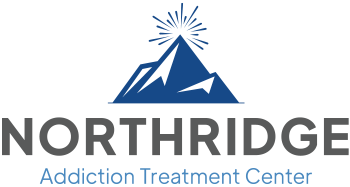Seeking Safety Therapy for Trauma and Substance Abuse

Historically, professionals viewed trauma and substance abuse treatments as distinct fields that were unconnected until recent developments. Seeking Safety therapy acknowledges the relationship between mental health and substance use disorders. The therapy provides integrated treatment to assist women who are facing both issues simultaneously.
Seeking Safety (SS) provides a secure environment for people facing post-traumatic stress disorder (PTSD) and substance abuse. Here, they can acquire coping mechanisms and begin the process of healing. They can do so without discussing or revisiting their past traumas, which may be distressing.
Seeking Safety Therapy
Seeking Safety is a treatment for women with both PTSD and substance abuse. It helps them deal with both issues at once. Many people use it, and it is the most widely-known therapy for people with PTSD and substance abuse
Dr. Lisa M. Najavits spent more than ten years conducting trials to enhance the Seeking Safety approach. A grant from the National Institute on Drug Abuse (NIDA) funded the trials.
The authors released the Seeking Safety workbook and therapy guide in 2002. They help therapists and patients follow the same procedures in each session. This promotes consistency and progress.
Trauma and Substance Abuse
Research shows that nearly 90% of women seeking treatment for substance use disorders have experienced a history of trauma. Not everyone who goes through trauma gets PTSD, and not everyone with PTSD also has a substance use problem. But around 60% of women in treatment have both, showing that these issues often happen together.
Trauma can happen from abuse, violence, neglect, war, disasters, illness, accidents, or witnessing violence and death.
Women who struggle with addiction are more likely to experience violence, sexual assault, and exploitation. This is often when they are under the influence of substances. The relationship between PTSD symptoms and substance dependence makes treatment more complicated. However, treating both issues simultaneously, known as dual diagnosis, is important for successful recovery.

Seeking Safety Model
The Seeking Safety model helps patients in their recovery by focusing on achieving safety from trauma without reliving it. The model is designed to meet patients at their current stage of recovery. It aims to help patients find safety and security from trauma without having to go through it again. This approach is applicable in both individual and group therapy settings.
The primary emphasis in the Seeking Safety model is grounded in five core principles:
- Safety is the foremost priority in treatment, assisting patients in achieving safety within their relationships, behaviors, emotions, and thoughts
- Integrated treatment addresses PTSD and substance misuse at the same time
- An emphasis on restoring the ideals that were compromised by trauma and addiction
- Coverage of four subject domains: cognitive, behavioral, interpersonal, and case management
- Focus on emotions and self-care to ensure that treatment progresses on a stable foundation and at a manageable pace
Studies show that the Seeking Safety model helps people with substance use disorders and PTSD in different situations. Furthermore, the National Institutes of Health (NIH) states that Seeking Safety aligns well with 12-step facilitation programs. Research indicates that patients who engage in 12-step programs following Seeking Safety therapy experience improved long-term recovery rates. They also report fewer symptoms of PTSD and are less likely to experience relapses.
Seeking Safety Treatment
The Seeking Safety treatment model encompasses 25 topics distributed across four categories: cognitive, behavioral, interpersonal, or a combination.
The Seeking Safety model includes 25 topics of treatment that cover different areas of recovery and self-management:
- Introduction to treatment/case management: Establishing a foundational understanding between the patient and the treatment process and determining case management needs
- Safety: Introducing the concept of safety as the primary healing stage from PTSD and substance abuse, including a list of over 80 safe coping skills
- PTSD and Taking Back your Power: Providing four handouts to deepen understanding and offer compassionate insight into the disorder
- Detaching From Emotional Pain; Grounding: Teaching three grounding techniques—mental, physical, and soothing—to help patients focus externally and manage negative emotions, including practical exercises
- When Substances Control You: Offering eight handouts detailing various facets of substance abuse and expectations upon cessation
- Asking for Help: Encouraging patients to recognize the need for help and learn healthy methods to seek assistance
- Taking care of yourself: Exploring healthy self-care practices and motivating immediate action on at least one self-care issue
- Compassion: Promoting self-compassion and understanding rather than self-criticism or a “tough love” approach
- Red and Green Flags: Developing a safety plan to identify and respond to signs of danger and safety
- Honesty: Discussing the importance of honesty in recovery, its application, and handling adverse reactions
- Recovery thinking: Using exercises to reshape perceptions of one’s recovery and experiences positively
- Integrating the Split Self: Working on recognizing and integrating various self-aspects presented in different contexts as defense mechanisms
- Commitment: Exploring creative ways to make and maintain personal and interpersonal commitments
- Creating Meaning: Distinguishing between harmful and helpful attachments and feelings
- Community Resources: Providing a list of national non-profit resources and guidance on how to access them
- Setting Boundaries in Relationships: Learning and practicing healthy relationship boundaries, including information on domestic violence and resources
- Discovery: Utilizing discovery as a tool to break persistent negative thought patterns and to gain new experiences and knowledge
- Getting Others to Support Your Recovery: Identifying supportive, neutral, or destructive people in one’s life and strategizing engagement with supportive people
- Coping With Triggers: A three-step model (“who, what, and where”) to help patients tackle PTSD and substance abuse triggers
- Respecting Your Time: Balancing and structuring time and energy during recovery, considering work, play, spontaneity, and relationships
- Healthy Relationships: Evaluating healthy versus unhealthy relationships and the impact of PTSD and substance abuse
- Self-nurturing: Learning about safe, positive self-nurturing practices as opposed to unsafe or impulsive ones
- Healing From Anger: Recognizing anger as a part of healing and exploring constructive and destructive expressions of anger
- The Life Choices Game: Engaging in a therapeutic activity where patients respond to hypothetical challenging life events using constructive coping skills
- Termination: Discussing feelings about treatment conclusion, reviewing the treatment experience, and finalizing an aftercare and relapse prevention plan

Seeking Safety Coping Skills
The Seeking Safety workbook details over 80 safe coping skills tailored to meet every person’s unique needs. This therapy program has the overarching goal of eliminating risky behaviors and managing triggers associated with PTSD and substance abuse through healthy, sustainable coping mechanisms.
Research conducted by the NIH has demonstrated that the highest recovery rates are observed in people who engage in a combination of behavior therapy, participation in Seeking Safety groups or individual treatment, and comprehensive relapse prevention planning.
Trauma Therapy at Northridge Addiction Treatment Center
Residential treatment programs offer a safe and controlled environment for practicing coping skills. They also provide support and use different therapy methods to help people.
Northridge Addiction Treatment Center (NATC) provides evidence-based, compassionate care. We recognize the complex interplay between trauma and addiction and the critical importance of a secure and supportive environment. Our center helps with addiction in a peaceful, private setting without judgment. We customize treatment to fit your needs and goals.
Our therapists at NATC are licensed, experienced, and caring. They focus on therapies that help heal trauma, such as Seeking Safety and cognitive behavioral therapy (CBT).
Reach out now to help find the right substance abuse treatment for you. Our treatment specialists are ready to assist you in achieving a life free from addiction.
Find Meaningful Recovery
Our caring and compassionate specialists are eager to help you comfortably navigate this journey to recovery. Our individualized treatment plan, programs, and therapies may be a perfect match for you or your loved one. Let us assist you in living the happy life you deserve. It starts with a phone call.




